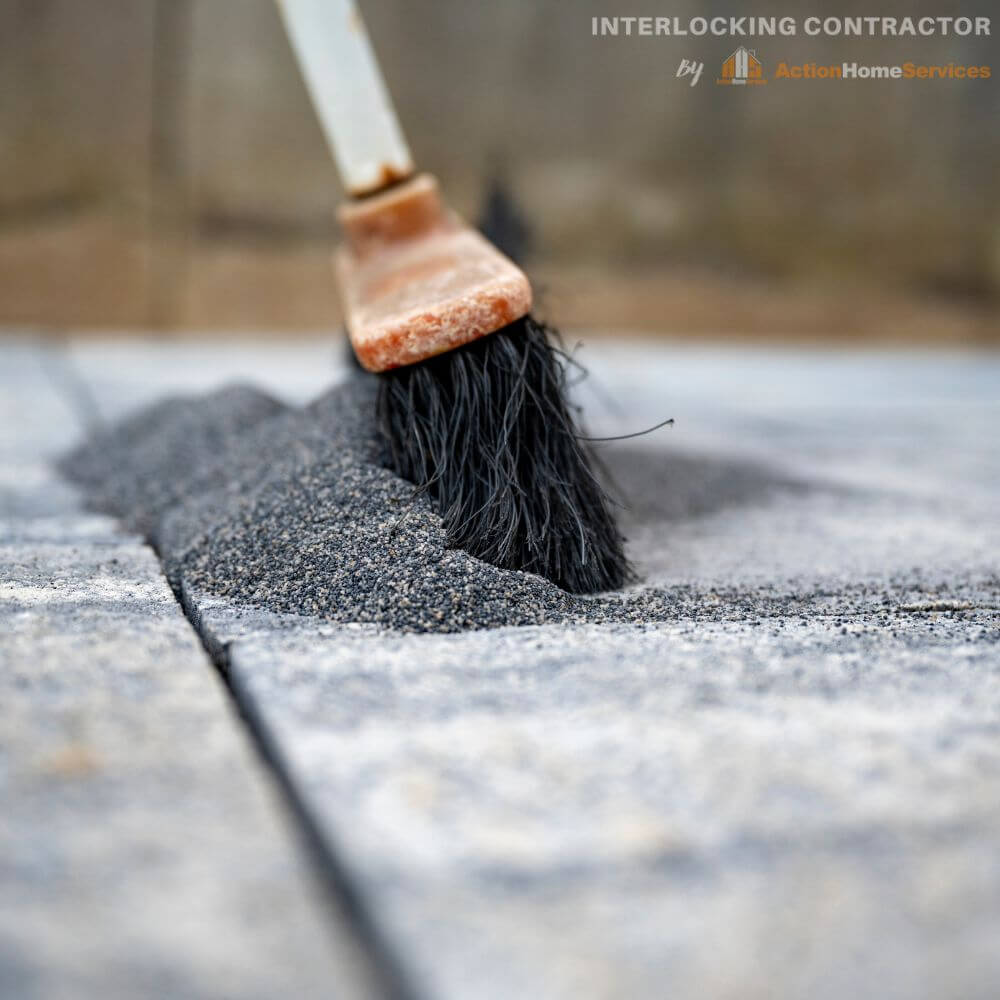Jointing Sand for Interlocking Pavers
Jointing sand plays a vital role in interlocking paver installations, providing stability and durability to the surface while preventing weed growth.
Jointing sand plays a vital role in interlocking paver installations, providing stability and durability to the surface while preventing weed growth.







Interlocking Contractor employs a meticulous approach to fortify your outdoor surfaces, ensuring long-lasting endurance against the elements. To begin, we meticulously spread polymeric joint sand across the expanse of your pavers, filling every crevice with precision. This specialized sand, engineered for superior cohesion, acts as a steadfast bond, preventing shifting and minimizing weed growth. With our expert application techniques, your interlocking structure gains heightened stability, standing resilient against the test of time and traffic.
Once the polymeric joint sand is evenly distributed, our process continues with a crucial step: water activation. With a gentle misting, we initiate the chemical reaction within the sand, solidifying its grip and enhancing its resilience. This pivotal stage ensures optimal consolidation, locking the pavers into a unified surface that defies displacement. Interlocking Contractor’s commitment to precision and excellence guarantees that every joint is fortified, safeguarding your investment for years to come.
Discover the multitude of benefits that joint sand brings to your outdoor hardscape with Interlocking Contractor. Joint sand isn’t just about filling gaps; it’s about fortifying your installation. By using our premium joint sand, you’re investing in the longevity and stability of your outdoor living space. Say goodbye to unsightly weeds and uneven surfaces, as our joint sand locks everything in place, ensuring a level, durable surface that withstands the elements year after year.
When it comes to your outdoor projects, trust Interlocking Contractor as the premier experts in joint sand application. Our team possesses the expertise and experience to ensure a flawless finish every time. With meticulous attention to detail and a commitment to excellence, we guarantee satisfaction with every project. Choose our interlocking experts for unmatched quality and reliability in joint sand application. Transform your outdoor space into a masterpiece that stands the test of time.

Jointing sand is a specialized type of sand used to fill the gaps between interlocking pavers. It’s crucial for providing stability, preventing weed growth, and enhancing the overall durability of the paver installation.
Polymeric joint sand contains additives that activate with water to create a binding agent, forming a solid, long-lasting bond between the pavers. This added strength helps to prevent erosion and weed growth more effectively than regular joint sand.
First, spread the polymeric joint sand evenly over the surface of the pavers. Then, using a broom, sweep the sand into the joints between the pavers, ensuring they are completely filled. Finally, mist the entire surface with water to activate the sand and initiate the binding process.
Yes, one of the primary benefits of using polymeric joint sand is its ability to inhibit weed growth between interlocking pavers. The sand forms a solid barrier that makes it difficult for weeds to take root and grow.
Polymeric joint sand is suitable for most types of interlocking pavers, including concrete, clay, and natural stone. However, it’s essential to follow the manufacturer’s recommendations and ensure compatibility with the specific type of pavers being used.
Polymeric joint sand is generally not recommended for application in temperatures below 32°F (0°C) or when frost is present, as it may not properly activate. It’s best to wait for warmer weather conditions for optimal results.